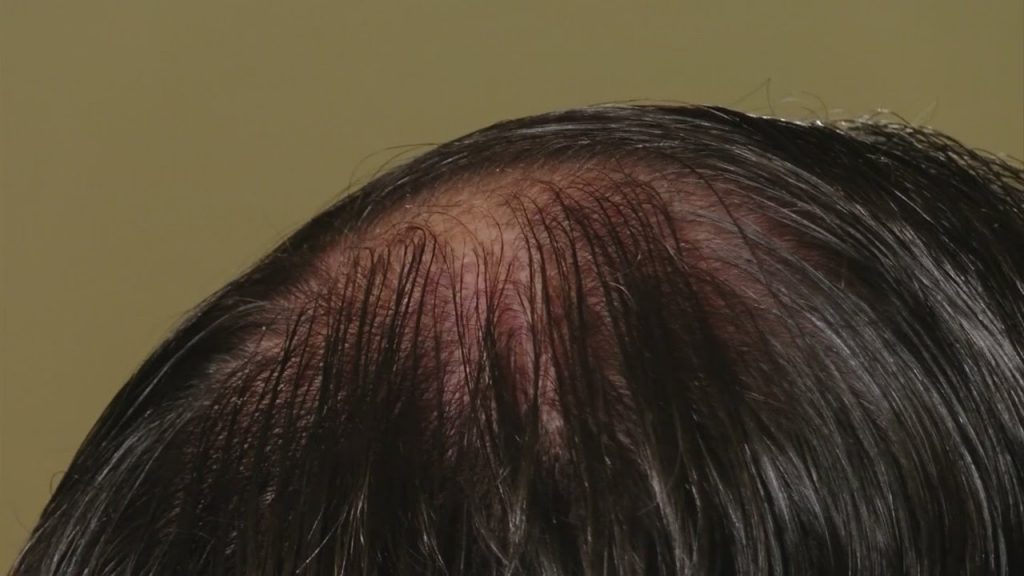What is Xandrox and How Does It Help Treat Hair Loss?
Xandrox products are produced by Dr. Richard Lee, the founder and owner of Regrowth, a company based in Los Angeles and dedicated to the treatment of hair loss since 1986. Dr. Lee’s primary innovation with his Xandrox products has been to combine Minoxidil with the potent natural anti-androgen and DHT inhibitor Azelaic acid. In this dual approach, Minoxidil stimulates growth while at the same time, Azelaic acid blocks the 5-alpha-reductase enzyme, causing a reduction of DHT formation in the scalp by up to 98%. Azelaic acid has been proven effective against acne and other skin conditions, but its effects against hair loss are not proven. Xandrox is available by prescription only and while its ingredients are FDA approved (Azelaic acid is approved for skin treatments, not hair loss), Xandrox itself is not. It is generally used by men to treat male pattern baldness but has also produced excellent results for some women, so can be considered useful for both sexes.
Combining the two key ingredients of Xandrox was a good idea for many reasons, but the most pragmatic has to be the fact that if you’re going to go to the trouble of applying a topical solution of Minoxidil (Rogaine) to your scalp anyway, why not benefit from the added effects of a product like Xandrox at the same time? Also attractive in this approach is the fact that the inhibition of DHT by Azelaic acid occurs in the scalp itself, not systemically throughout the rest of the body. The precise mechanism by which Azelaic acid prevents the 5-alpha-reductase enzyme from producing DHT is not known at this stage. Azelaic acid is also an important component of both Revivogen and Crinagen, so its DHT inhibiting efficacy in combating hair loss, while not completely understood yet, is not in question.
The first Xandrox product was released in 1998 and contained 5% Minoxidil and 5% Azelaic acid. The following year, Regrowth released a 12.5% Minoxidil lotion, also containing 5% Azelaic acid, to supplement the use of Xandrox 5% solutions in areas such as the temples or frontal hair line that were not responding well to the weaker solution. Now, after much work with a biochemist to produce a chemically stable version of the product with more potency, Xandrox15 containing 15% Minoxidil and 5% Azelaic acid has arrived. Xandrox is available as a Day Formula and a Night Formula, and for convenience, users often create a regime consisting of a number of differing products at different times of the day. Being stickier and resulting in hair that can look a little messy, Xandrox15 is often used at night and washed out in the morning. During the day, a lower strength and less noticeable product can be used instead. Whichever combination of products are at work, 1 ml of Xandrox is usually applied to the scalp twice daily.
In addition to various combinations of Minoxidil and Azelaic acid, Xandrox products can contain ingredients such as Betamethasone valerate (a potent anti-inflammatory), Benzyl niccotinate (an absorption enhancer), or Retinoic acid (which gives the scalp a light “chemical peel”). Products containing additional components can be made to order. The reverse is also true, with specific ingredients able to be omitted from the formula on request if you do not react well to them. The most recent range of Xandrox products generally do not contain Retinoic acid as they are strong enough to have made it redundant and the potential for unwelcome side effects including an itchy, flaky or tingling scalp is too great.
Few side effects have been observed with Xandrox and many prefer it to Rogaine because it is odorless, cleaner and less greasy.
A 65 ml bottle of Xandrox 5% costs $33.95, a 125 ml bottle of Xandrox 12.5% Lotion costs $89.95, and 125 ml of Xandrox15 costs $88.00.
What is Xandrox and How Does It Help Treat Hair Loss? by Mac Morris




